
Modern men are breaking traditional gender norms
Dresses and skirts are traditionally worn by women. Nowadays, however, it is becoming more popular for men to wear dresses on runways and even red carpets. These men are redefining gender norms, and while some people love it, others find it strange and unusual.
The blurry lines of gender norms
Gender norms are a hot topic in modern society. Gender norms are based on the different expectations that individuals, groups and societies have of individuals. These expectations are based on individuals' sex and societies' values and beliefs about gender. These expectations and beliefs define what appropriate gender norms are and decide which kinds of behavior are appropriate for females or males (Blackstone, 2003).
We all know about traditional gender roles, where men work and women stay at home, where blue is for boys and pink is for girls, and especially where men wear pants and women wear dresses and skirts. According to traditional gender roles, clothes have a gender. Some people still believe in this, but some do not.
The idea that pants are masculine and dresses are feminine is a more modern idea than you might think.
People have begun to advocate for the idea that clothing does not have a gender. Especially younger generations have resisted being boxed into a particular gender based on their clothes. Moreover, this idea of clothes being gendered is a very western-centered idea. In many cultures, from southeast Asia to Africa, robes and 'skirts' are totally acceptable clothing for men. The idea that pants are masculine and dresses are feminine is a more modern idea than you might think. For much of history, dresses and skirts were worn by everyone, including men.
A piece of fashion history
If we take a look at history, it was completely normal for men to wear dresses and skirts. Skirts were worn by both men and women in many of humanity’s most ancient civilizations. This was mainly because skirts were cheap and efficient, and you could do anything in them. Pants were also worn by both genders, particulary for warmth when it became cold and because they were necessary for horse-riding.
The divide between pants for men and skirts for women did not fully emerge until the 19th century. In this century, academics, monks, and men of leisure still wore gowns. This change stemmed from changes in clothing norms for children. Up until the 19th century, European children were dressed in skirts no matter their gender. Later in this century, however, it became common to give boys between the ages of 4 and 7 their first pair of trousers. This showed that they had grown beyond infancy. At this time, society's perspective on what made a ‘man’ started to shift.
Deviants are created by society and are based on how people react to certain actions and create certain groups.
Today, many contemporary menswear lines have skirts in their collection and on the runway, but it is not really mainstream. There has been a lot of resistance to men wearing skirts and dresses based on the idea that these are feminine clothes. A man wearing a skirt or a dress would therefore be considered feminine, weak, or simply looking for attention (Thorpe, 2017). Therefore, a man wearing a dress is sometimes depicted as deviant. Groups make rules and norms; someone is deemed deviant when they break one of these rules. Groups however, are not natural, they are social constructs that mainly exist in the mind (Blommaert & Verschueren, 1998). Deviants are created by society and are based on how people react to certain actions and create certain groups (Becker, 1963).
Men redefining gender norms
In the world of Hollywood, men are starting to redefine gender norms by wearing dresses and skirts on red carpets or on stage. Prince, Kurt Cobain, David Bowie, Jared Leto, Keiynan Lonsdale, and Vin Diesel are all examples of famous men who have worn dresses or skirts. Billy Porter, in particular, has really made a statement with his fashion.
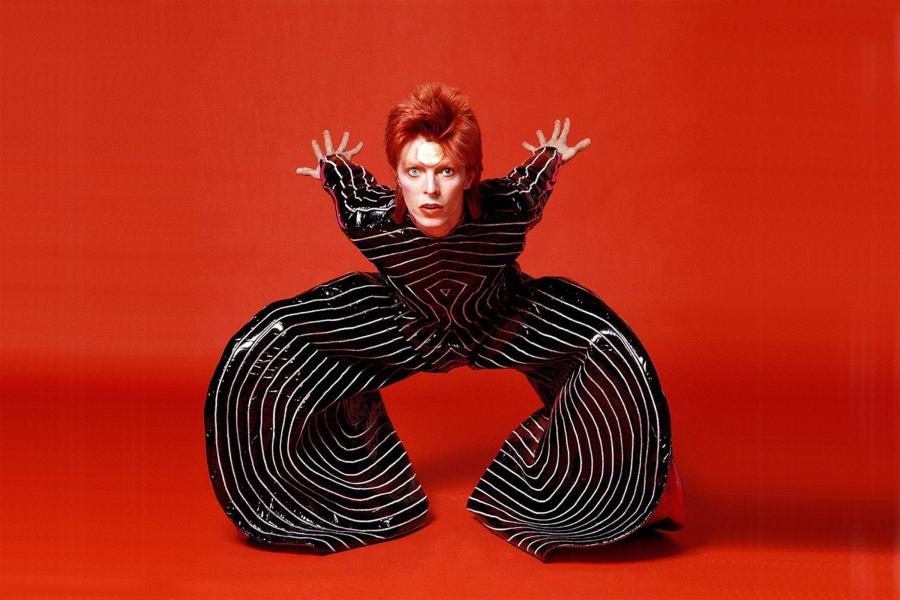
David Bowie experimenting with fashion
Billy Porter is an actor known for ‘Pose’, a show about New York City’s African-American and Latino LGBTQ and gender-nonconforming drag ball culture.
Porter has always worn unusual fashion pieces, but really stood out at the 2019 Golden Globes. Porter wore a suit with a huge hot pink cape attached to it. After this, he went even further. At the 2019 Oscars, Porter was seen on the red carpet in a beautiful tuxedo gown, and then wore a stunning gold gown for the 2020 Oscars. Porter has stated that ‘My goal is to be a walking piece of political art every time I show up. To challenge expectations. What is masculinity? What does that mean? Women show up every day in pants, but the minute a man wears a dress, the seas part.’
Billy Porter wearing a tuxedo gown to the Oscars in 2019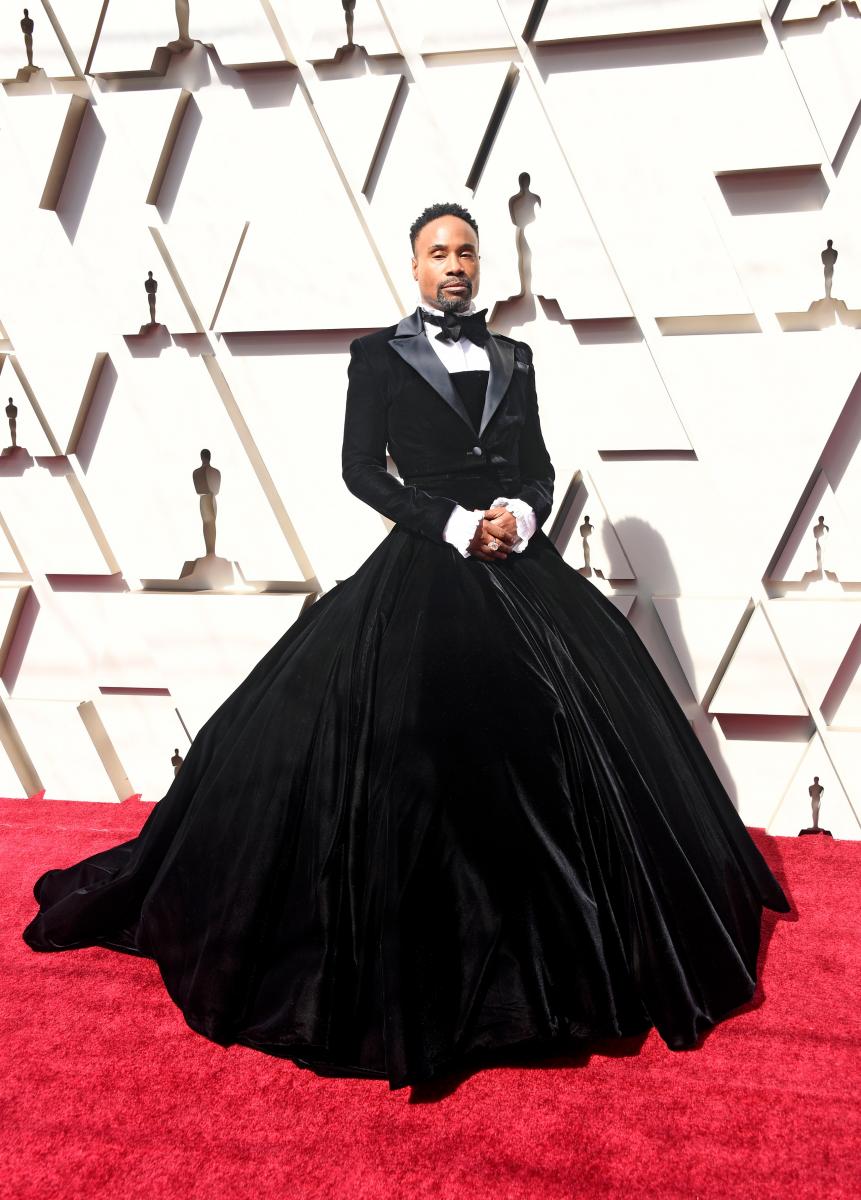
Porter knows that just living his own truth in public is a political act. He decided to add fashion to it and really make a statement. He did not want to accept that women who put on pants are considered strong, because pants are associated with the patriarchy, but men who put on dresses are considered disgusting (Ashenden & Makari, 2019). He wants to redefine gender norms and make the political statement that masculinity and femininity are not set in stone and should not limit people.
Men, dresses, and the mainstream
Ideas, activities, or attitudes that are shared by most people and regarded as normal are considered mainstream. Men who wear dresses and break gender norms are still a minority. This makes it hard to become mainstream, because there is a hierarchy of credibility. The members of the highest group define how things are and what rules you should obey (Becker, 1966 in Greer & McLaughlin, 2010).
Men wearing dresses and skirts mainly happens in the world of celebrities, and not everyone will see that. On social media, algorithms often place people in their own little bubble. If you do not look for men in dresses, you probably will not see them. People who think a man wearing a dress is wrong will likely not see pictures of Billy Porter, Jared Leto, or Jonathan van Ness on their social media feeds. However, this disruption of gender norms recently gained more attention through Harry Styles and Vogue.
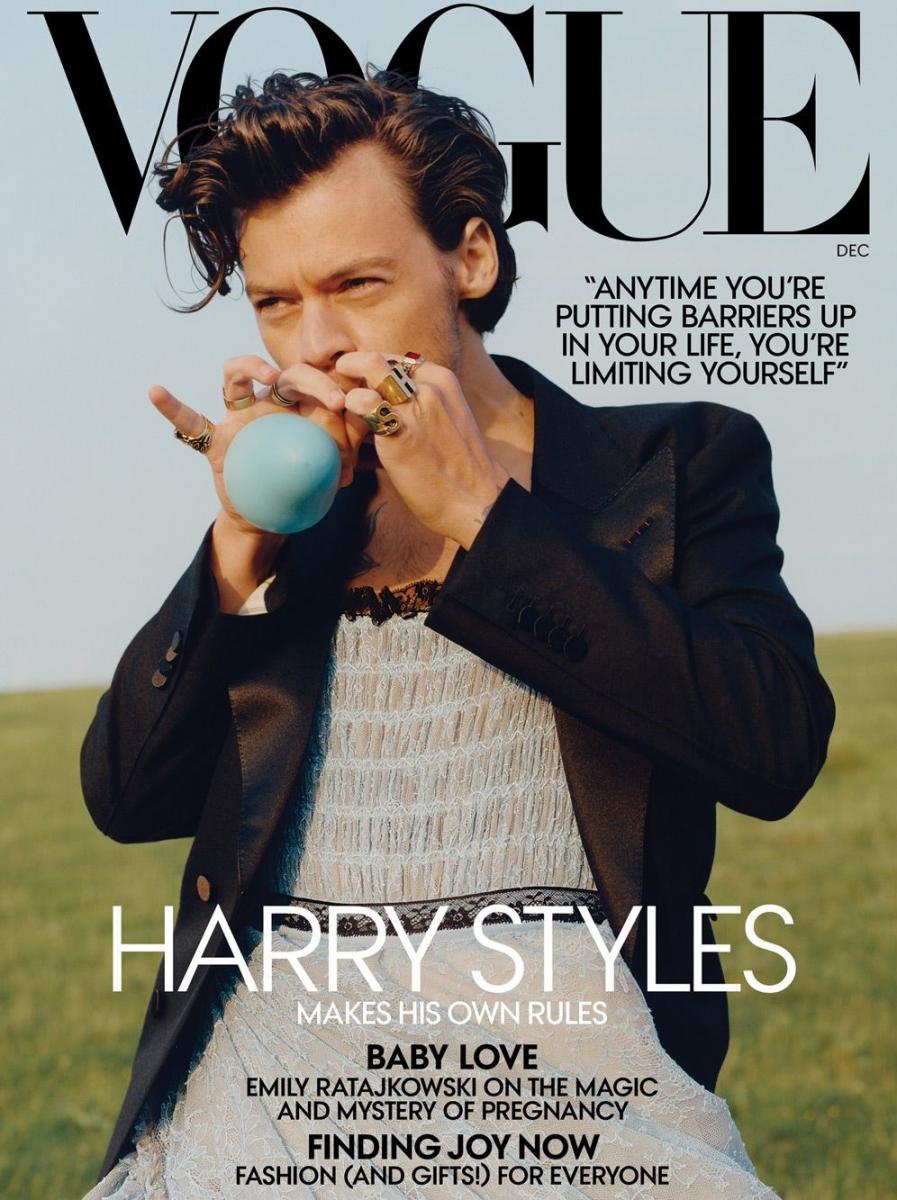
Vogue magazine with Harry Styles on the cover
On November 13th, 2020, something revolutionary happened. Harry Styles became the first solo male on the cover of Vogue magazine. Vogue magazine launched in 1892 and has had many noteworthy covers. In 1974, Beverly Johnson became the first black woman on the cover, and in 1988 Michaela Bercu became the first Israeli model on the cover. Now in 2020, Harry Styles has become the first ever solo male model on the cover of Vogue - on top of that, he is wearing a dress. The cover went viral - it was almost impossible to miss.
Reconstructing gender norms
Harry Styles is an English-born singer. He is best known for being a part of One Direction, a succesful boyband that emerged from the UK television show ‘The X Factor.’ In 2015, One direction went on a hiatus after one of the members left the band. Two years later, in 2017, Harry Styles launched his solo career, releasing his first solo single and eventual album. In that same year he also made his acting debut in the Cristopher Nolan movie Dunkirk.
Harry Styles is not only known for his music and acting but also for his flamboyant fashion. He is frequently seen in high fashion outfits that challenge traditional gender norms. Styles said in an interview with Variety that who he looks up to people in the music industry who have broken gender norms, such as Prince, Freddie Mercury, David Bowie, Elvis Presley and Elton John.
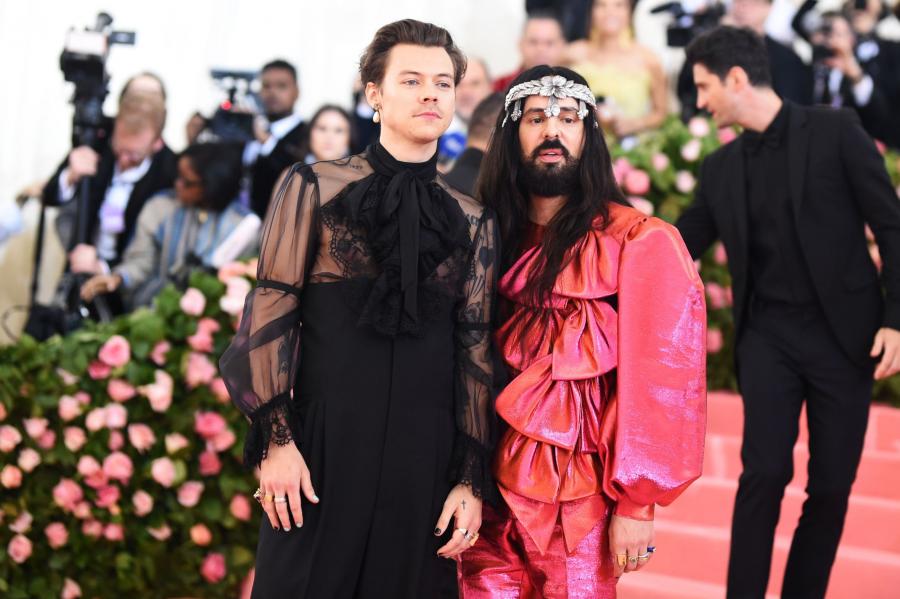
Harry Styles at the Met gala in 2019 together with Jared Leto
The Vogue cover was not the first time Styles had dressed in gender non-conforming fashion, or even the first time a man had worn a dress. But it was the first time conservative author Candace Owens had a viral tweet about it. It was everywhere online and caused a lot of controversy.
Candace Owens' rules for society
Candace Owens is a conservative American author, commentator, and political activist. She has become known for her increasingly pro-Trump activism as a black woman as well as her criticism of Black Lives Matter and the democratic party. On November 13th she took to twitter to let everyone know what she thought of Harry Styles in a dress.
Candace Owens' reaction on Harry Styles wearing a dress
Owens sees Styles as a special kind of person because he has broken a rule. He has worn a dress, an item supposedly reserved for women. She sees Styles as an 'outsider' or 'deviant.' According to Becker (1963), the simplest view of deviance is anything that varies too widely from the average. Owens is defining gender roles and she expressing which rules she thinks people should follow. People who break those rules can be seen as outsiders.
Owens distinguishes two kinds of men in her tweet: strong manly men and feminized men. She makes the generalization that no society can survive without strong men. She connects feminized men with cultural marxism and she calls the Vogue cover an 'outright attack.' By using this language, she emphasizes that it is something bad that we should fight against. This also implies that we should support strong, manly men.
The phrase 'feminization of our men' is also shaped in such a way that it sounds wrong or unnatural. The genders are juxtaposed, and the comparison implies the degeneration of the ‘superior’ male to the ‘inferior’ female.
Candace Owens' reaction to the backlash on her tweet about Harry Styles
This is a very agressive tweet. By calling people idiots and stupid, Owens puts herself above other people. She positions herself as a leader who can make rules and decide what is right and wrong. Men dressing as women is simply wrong, according to her. Men in dresses fail to obey social rules, making their behavior deviant.
In these tweets she asserts that feminized men are not stable, eliding wearing a dress with mental illness. According to Becker (1963), illness can be defined as any sign of malfunctioning, no matter what norm it is based on.
Owens' tweets received both signficant support and significant backlash. Many celebrities also chimed in, and even politician Alexandria Ocasio-Cortez spoke up about it.
AOC supports breaking gender norms
Alexandira Ocasio-Cortez, often known as AOC, is an American democratic politician and has served as the representative for New York’s 14th congressional district since 2019. AOC is the youngest woman ever to serve in the United States congress and has a significant social media presence. She uses social media to her political advantage, which is how she stumbled upon the Harry Styles controversy. She was answering questions from her followers on Instagram when someone asked her her thoughts on the subject.
AOC reacting to the Vogue cover and the uproar it caused
Like Owens, AOC also recognizes two different groups. However she does not talk about men wearing the dresses but rather about the people reacting to them. AOC mentions that the Vogue cover might provoke some anger or insecurity around masculinity and femininity. She obliquely refers to more conservative people, who often have a hard time parting with traditional gender norms. She makes it very clear that she is not part of that group. Her own opinion on the cover is that it is wonderful and that the masculine and feminine elements are beautifully balanced.
AOC mentions that it is important for artists to create things that make people think, because nobody wants to see the same things all the time. Even though she says this, she does not label anyone as deviant or an outsider. AOC simply depicts men wearing dresses as a change that is happening and we should start to accept. This makes her 'group' seem more inclusive than the 'group' Owens represents.
A simple magazine cover became political
Harry Styles' Vogue cover has become far more than just a nice picture. It has become political. Owens takes a conservative point of view while AOC takes a progressive one. It became a debate on traditional gender norms and how far someone can take their freedom of expression. Owens even invokes the term cultural Marxism, saying that marxism and feminized men are an attack on society. Cultural Marxism is in itself a multiculturalist project in which the traditions of our Western cultures are questioned, deconstructed and ridiculed (Blommaert, 2019).
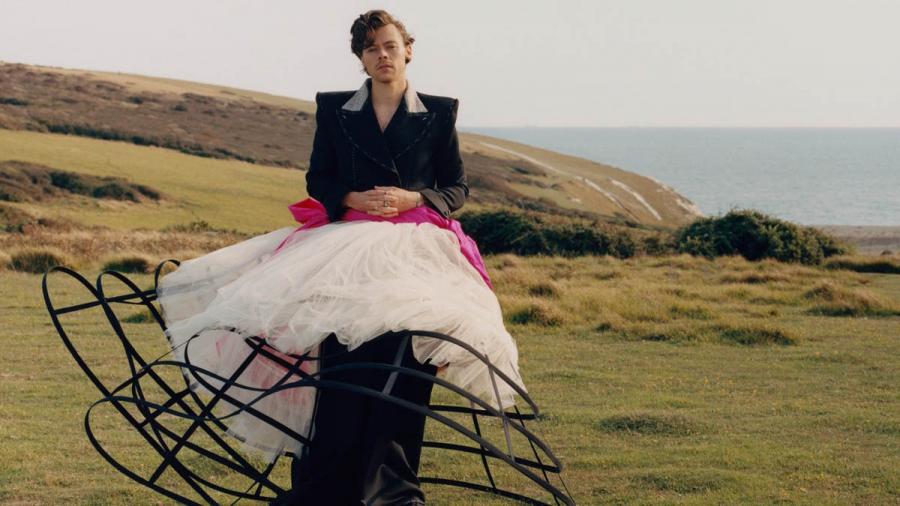
Harry Styles in Vogue magazine
Owens constructs men who wear dresses as deviants and outsiders. This is because they break the social rules she believes in. She wants to live by traditional gender norms, but society is changing and so are people's perspectives on masculinity and femininity. More and more people want more freedom and equal rights for everyone, which does not go together with traditional conservative gender norms. Younger generations are more progressive than conservative. We can only wait and find out what kind of man will come out on top.
References
Ashenden, A. & Makari, R. (2019, July 12). Pose star Billy Porter: Wearing a dress is a ‘political act’.
Becker, H.S. (1963). Outsiders: Studies in the sociology of deviance. The Free Press.
Blackstone, A, M. (2003). Gender roles and society. In J. R. Miller, R. M. Lerner & L. B. Schiamberg (Eds.), Human Ecology: An Encyclopedia of Children, Families, Communities, and Environments (335-338). ABC-CLIO.
Blommaert, J. (2019, November 28). Why has cultural Marxism become the enemy?
Blommaert, J. & Verschueren, J. (1998). Debating diversity: Analysing the discourse of tolerance. Routledge.
Greer, C. & McLaughlin, E. (2010). We Predict a Riot? Public Order Policing, New Media Environments and the Rise of the Citizen Journalist. The British journal of criminology, 50(6), 1041-1059. DOI:10.1093/bjc/azq039
Thorpe, J. R. (2017, May 22). The history of men & skirts.